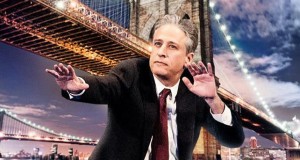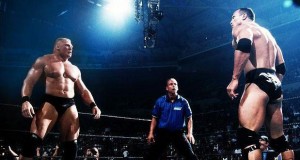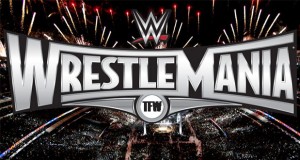Darren Aronofsky’s The Wrestler tells the story of a wrestler named Randy ‘The Ram’ Robinson who was a big star in the Eighties but is now past his prime and is reduced to wrestling in smaller venues, such as school gymnasiums, in front of a smattering of people to make ends meet.
The Wrestler is a great educational piece about the world of professional wrestling. Speaking as a wrestling fan, its easy to observe that the most common misconception regarding the ‘fakeness’ of wrestling is that because the outcome is predetermined, the assumption is that the wrestlers do not get seriously hurt. The film is rather straightforward in its portrayal of the physical aspects in the ring. Aronofsky, without embelishing, shows us that a lot of the wrestling holds, despite their theatrics, are indeed painful. He also shows that when a wrestlers bleeds, usually the wound is self-inflicted with a razor blade. Therefore it is ‘fake’ insofar as the wound was not inflicted by an attack from the opposing wrestler, yet it is real blood and is still very painful.
The film’s focus however is on the fantasy and wish-fulfilment that wrestling creates for the wrestler, not the fan. ‘Randy the Ram’ is the stage-name for Robin Ramzinski. He clearly wishes to live his character outside of the ring where in the real world he has blown his savings, lives in a trailer and works a menial day job at a supermarket. Even the use of his real name ‘Robin’ causes him to wince and breaks the illusion that he is a heroic American patriot who defends a wrestling heavyweight title agaisnt evil foreigners.
Randy is friends with a stripper named Pam. The dynamic of their relationship neatly sums up Randy’s delusions. As a stripper, Pam also works in a job that indulges in creating a fantasy for an audience. However, she recognises the job for what it is and lives a life that is removed from her work. Randy is attracted to Pam because of who she is at her work for which Pam spurns his advances. She does care for Randy however, and helps him pick out a thoughtful gift for Randy’s estranged daughter which helps Randy reconnect with her. After this Randy makes another move on Pam, who still turns him down.
When Randy attends a wrestling event shortly afterwards, he receives the attention he desires from both the wrestlers and the fans. He then gets wasted on drugs and sleeps through the night, causing him to miss a dinner date with his daughter. With the newfound bond for his daughter in tatters, Randy then proceeds to have a breakdown at his job when he is embarassed that a fan has recognised him working at a deli counter. Randy cuts his hands, loses his temper and walks out.
Despite suffering a heart attack and a doctor’s warning that he needs to retire, Randy decides to book himself in a match against a former opponent from the Eighties, The Ayatollah, for a ‘big money’ rematch. Although the money is likely to be a pittance, it helps Randy indulge in his past glory. Pam pleads with him to reconsider but for Randy, the only sense of self-worth he has left is when he is in a wrestling ring. The film ends with Randy realising that Pam has left him and despite increasing heart pains he leaps off the corner of the ring as the film fades to black, leaving the audience unsure of his fate.
It is a credit to Aronofsky how artfully he captures what drives Randy and many real life wrestlers of his generation to push themselves to the point of self destruction. Curiously, one effect this seems to have had on the industry itself is that instead of being viewed as a cautionary tale of someone who becomes stuck trying to recapture a former glory, The Wrestler has instead been lauded and even glorified from mainstream organisation WWE to independant promotion Ring of Honor.
To most viewers, Randy will be a frustrating and pitiful character who is unable to function in the real world and is selfishly addicted to the cheers inside the wrestling ring at the expense of raising his daughter or holding any kind of meaningful relationship. And yet in recreating his story in WWE and ROH storylines, both promotions chose to represent his character with babyfaces (good guys) and there was an extreme case of cognitive dissonance at the biggest wrestling event of this year when a withered 62 year old ‘Superfly’ Jimmy Snuka hobbled to the ring at Wrestlemania 25, with Mickey Rourke at ringside, to wrestle against a younger Chris Jericho who plays the role of a heel (antagonist) for pointing out that washed-up wrestlers of the Eighties should no longer be wrestling.
This probably tells you everything you need to know about why the mortality rate for wrestling will not come down any time soon and how the wrestling industry has apparently completely misunderstood the moral to Aronofsky’s story, believing it to be a tale that glamourises a near-suicidal commitment to wrestling.
As I write this, the Japanese professional wrestling industry is currently reeling from the in-ring death of Mitsuharu Misawa, a wrestler whose stature in Japanese is comparable to Hulk Hogan in the West. He died in an eerily fashion to what is portrayed in the film and leaves behind both a widow and a daughter. He was 47.
 The FAT Website est. 1999
The FAT Website est. 1999





Great review Edo.
I agree that this really portrays Wrestling’s “real” side.
I think its the industry’s fault though for trying to fool people it was real when it clearly wasn’t. This then distracted people from the realness that wrestlers really do injure themselves. If they were a bit more upfront about it then this would become more appreciated by the public.
I don’t know about that. I’m not sure if I’m following your reasoning. I mean wrestling kayfabe (the pretense that it is real) has been broken for about 20 years now and I’m not sure whether ‘audience appreciation’ changes the situations that the wrestlers put themselves through.
I think most wrestling deaths nowadays can be attributed to an unrealistic expectation of how you should look on tv (basically the most likely path to success in WWE is being roided to max) and the insane working conditions that you mentioned before in Bret’s book where they’re on the road for 300 days of the year. There’s no way a body should go through that year on year.
The worst part I think is the culture of acceptance amongst most of the wrestlers that this is the way it has to be. There are some dudes out there like Kurt Angle that really should not be wrestling. It’s Kurt’s fault for pushing himself to continue and its the company’s fault for being irresponsible enough to let him do it.
Hmm – I think it still contributes but probably a bit far to say the only reason. Vince is quite ruthless with the WWE and working conditions with so many shows happening every week.
The Wrestler really hit home that these people like Bret Hart were superstars living their character day in, day out. No time for family and real normal life. Then when their bodies cannot handle it anymore they do not know what to do with their lives. Even Hogan is struggling…